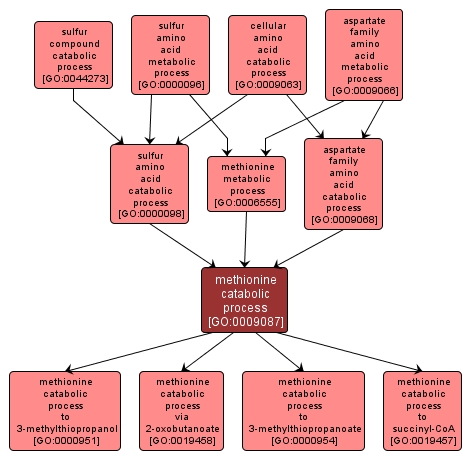GO TERM SUMMARY
|
| Name: |
methionine catabolic process |
| Acc: |
GO:0009087 |
| Aspect: |
Biological Process |
| Desc: |
The chemical reactions and pathways resulting in the breakdown of methionine (2-amino-4-(methylthio)butanoic acid), a sulfur-containing, essential amino acid found in peptide linkage in proteins. |
Synonyms:
- methionine catabolism
- methionine degradation
- methionine breakdown
|
|

|
INTERACTIVE GO GRAPH
|














